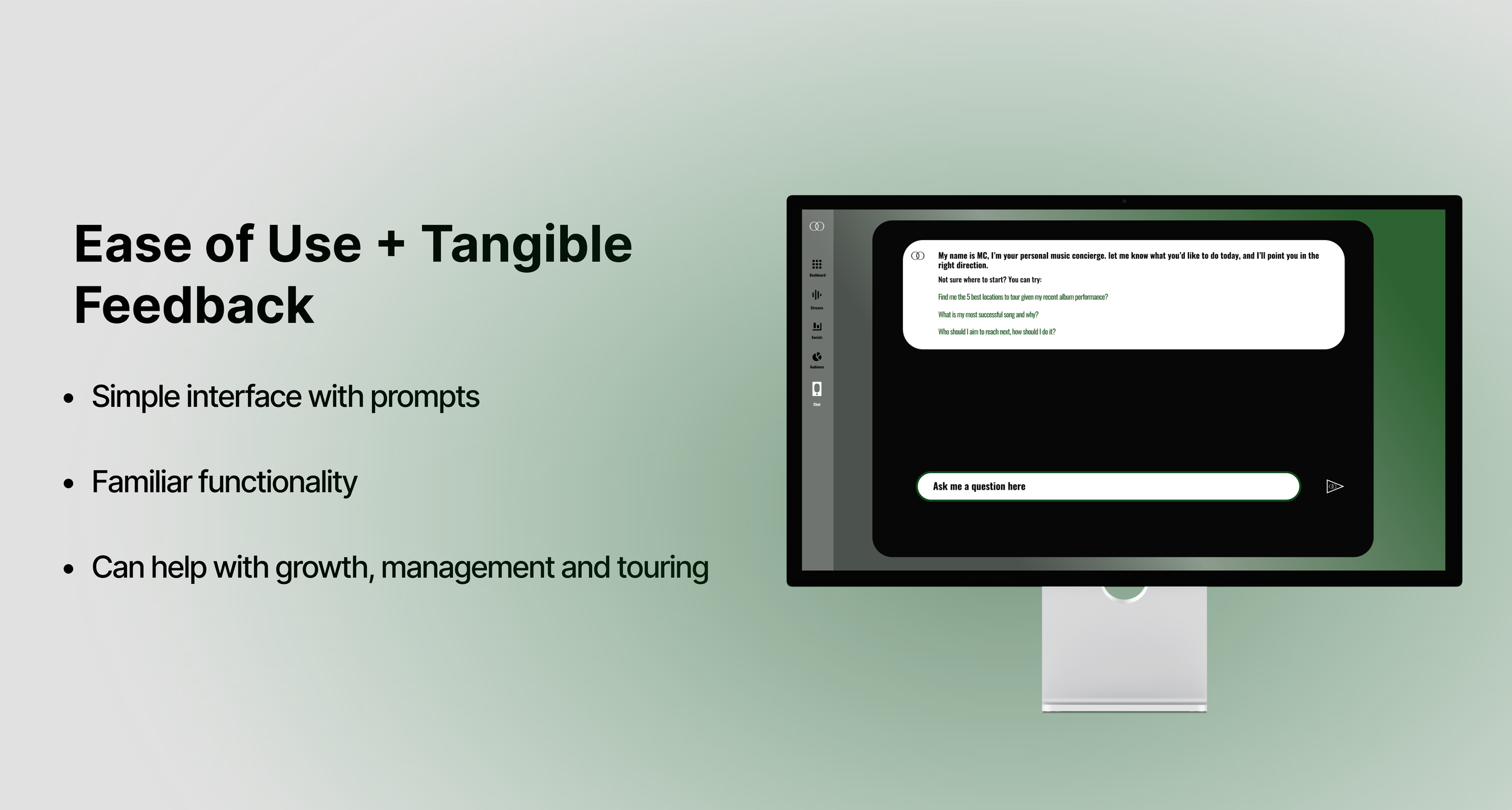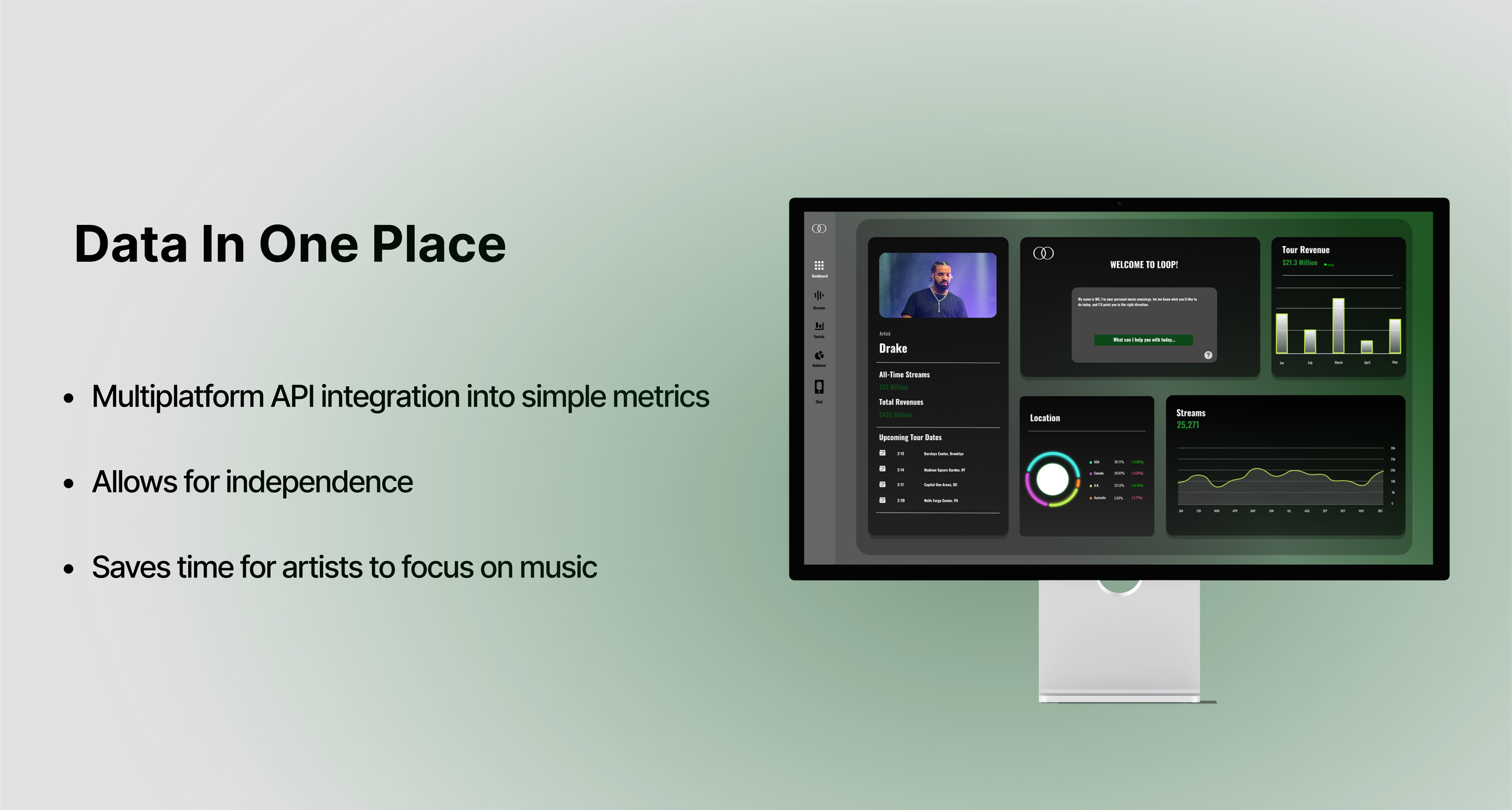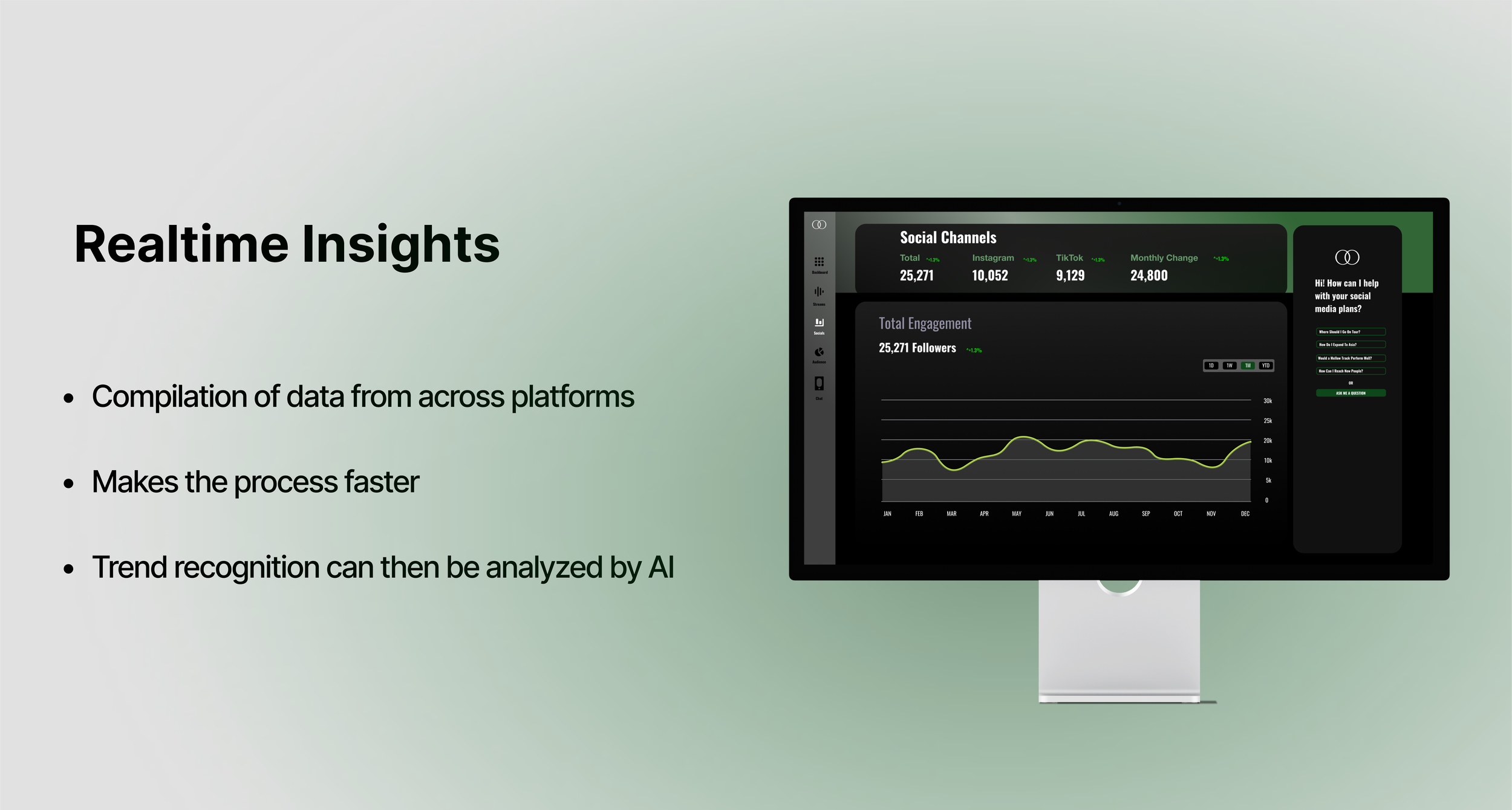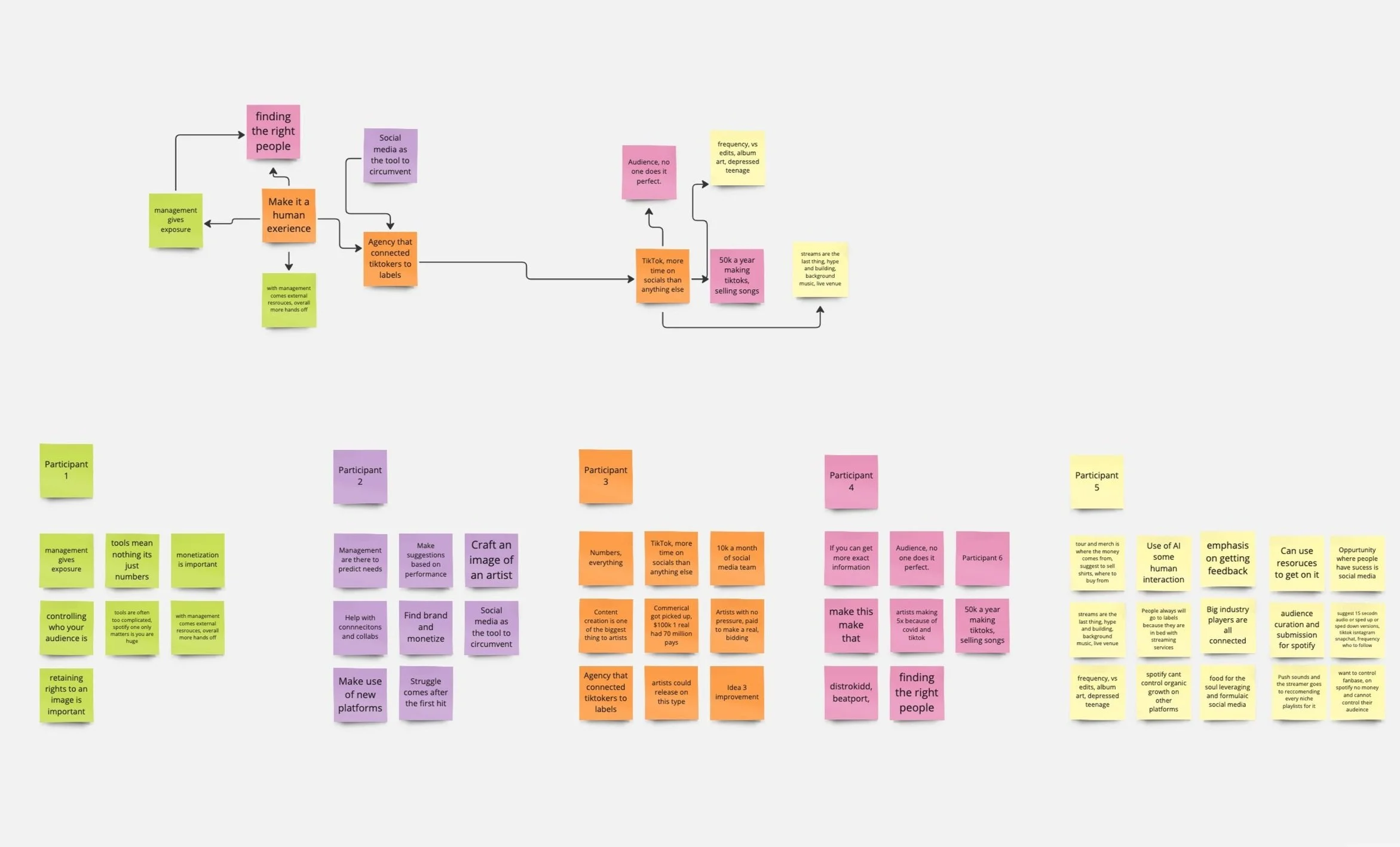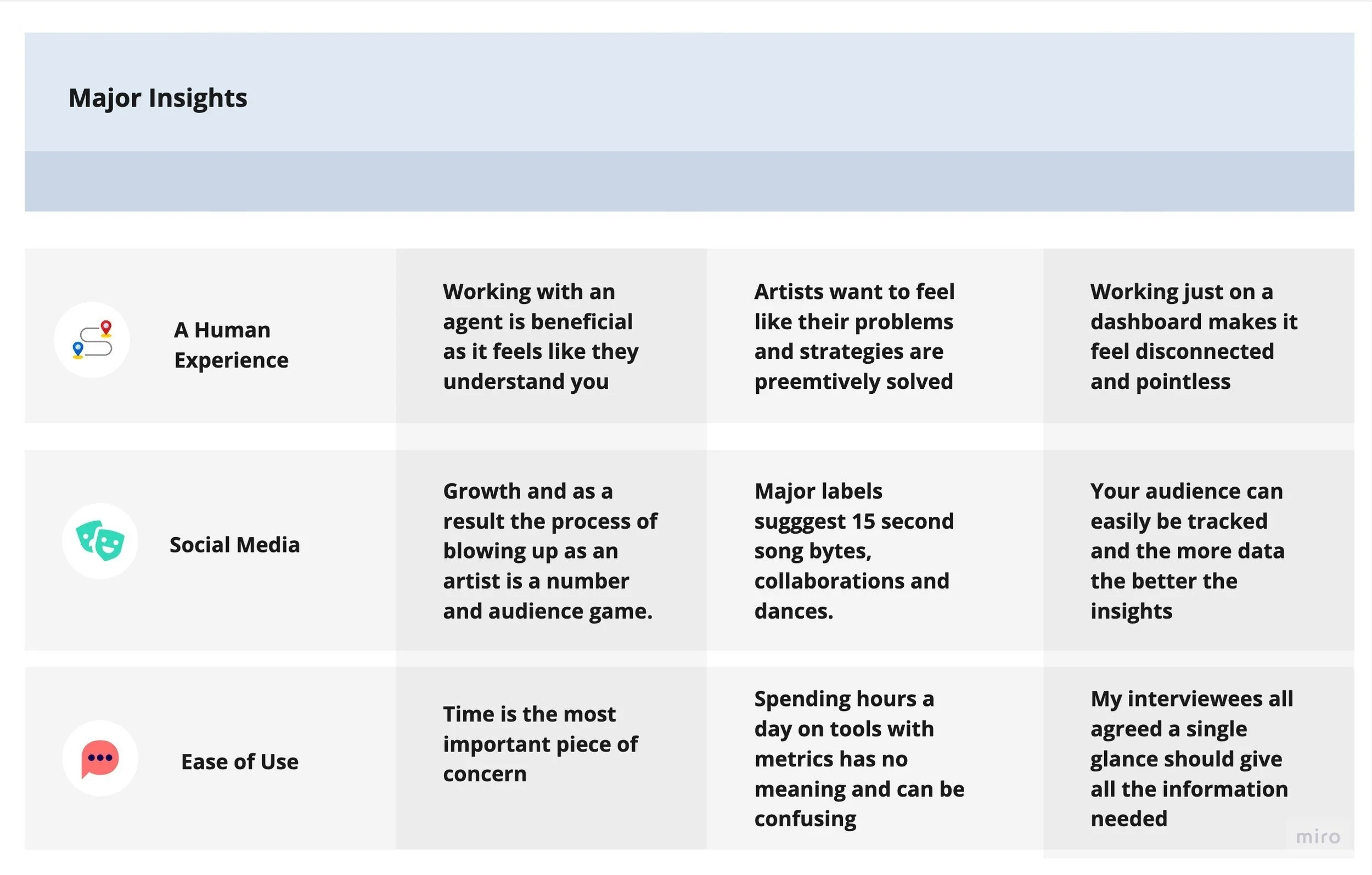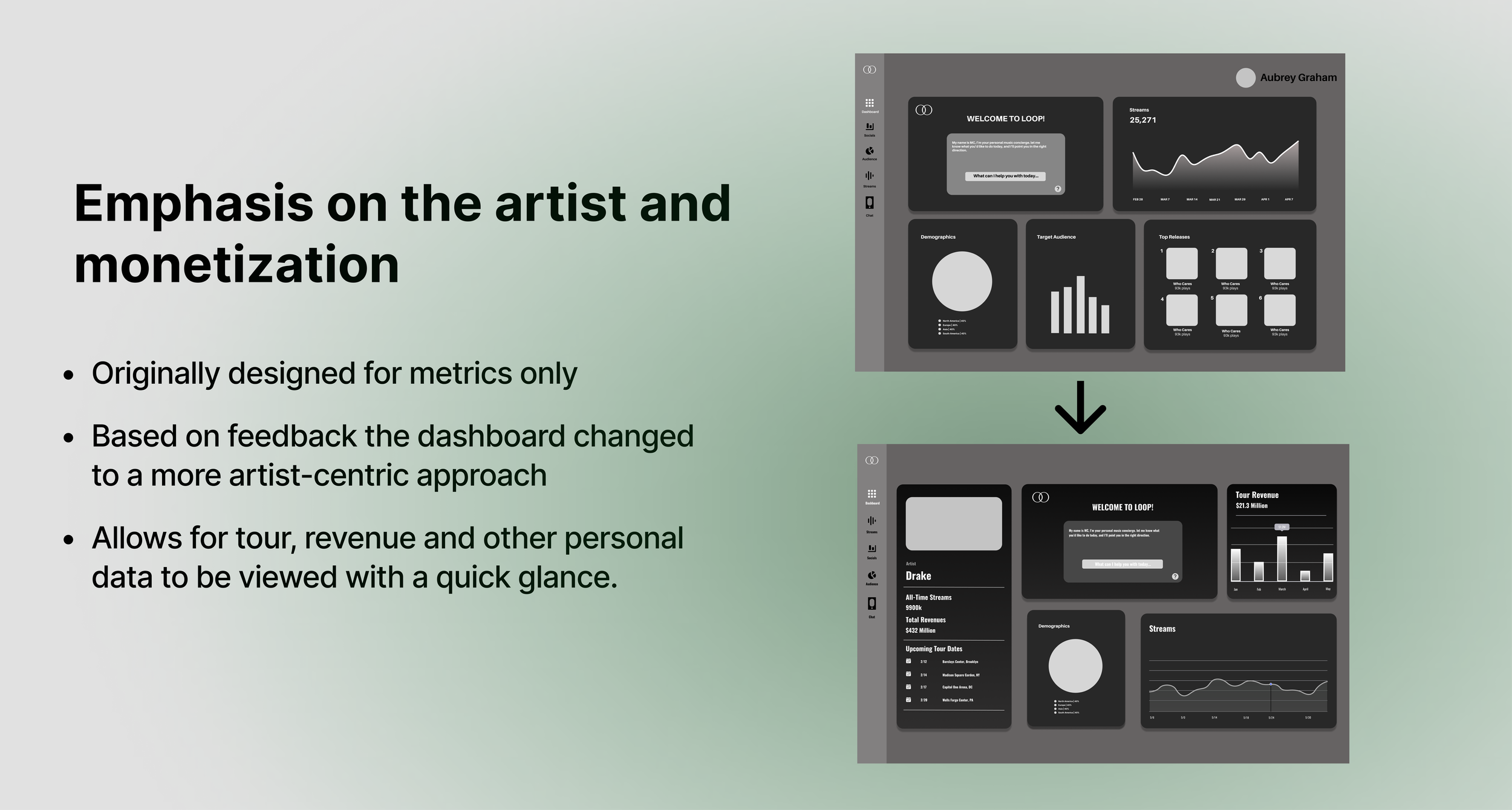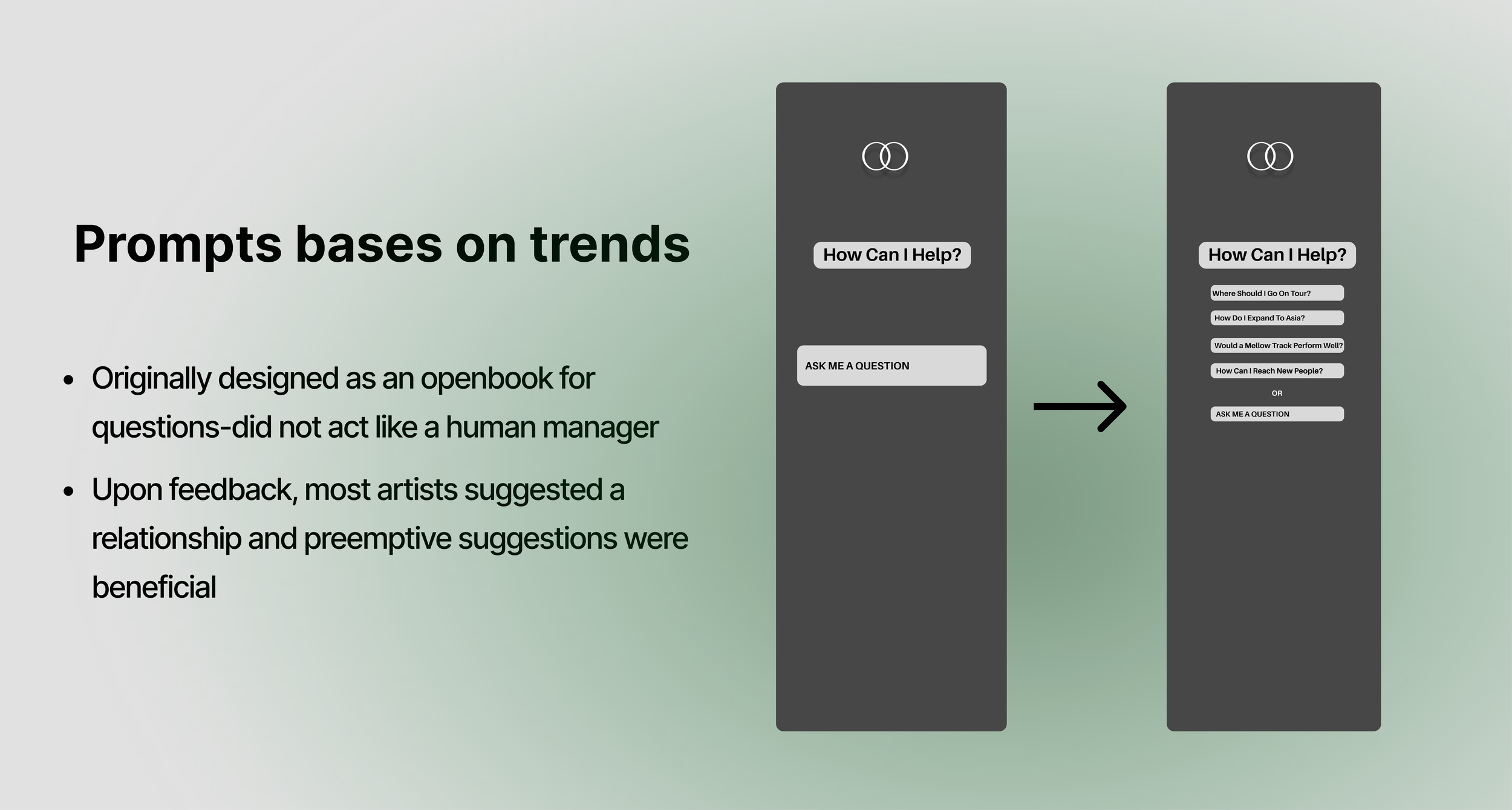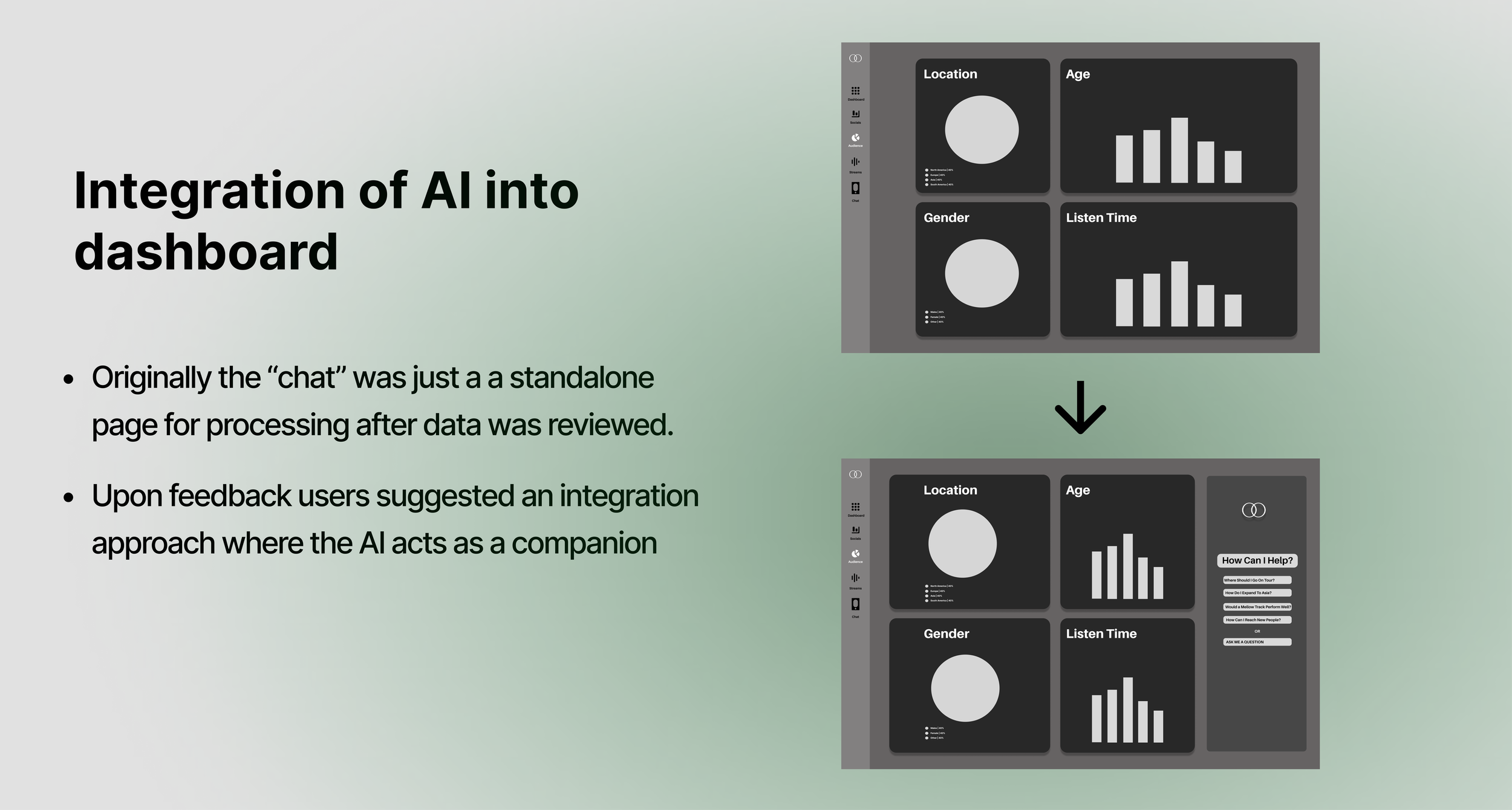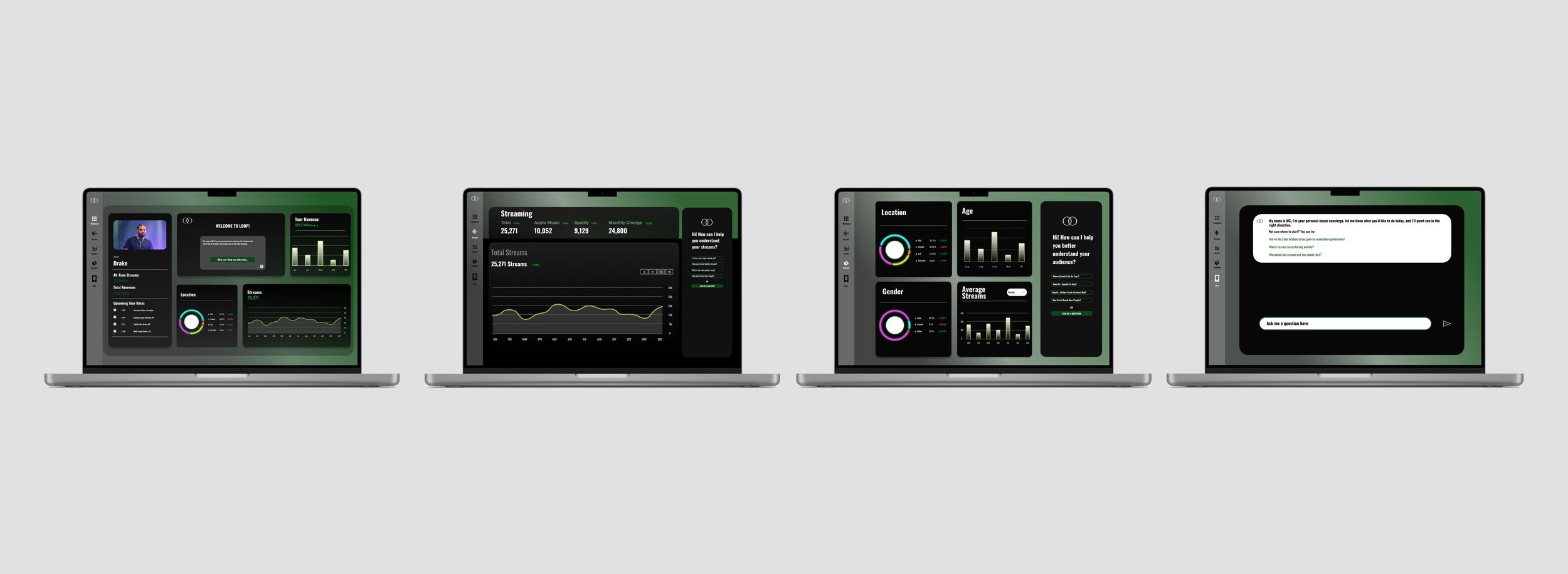Timeline
May-August 2023
Role
Lead UX Designer
Problem
Artists don't have the modern tools to grow
Artists are fed up with an industry that has become stagnant with little attempt to change. Millions of artists feel frustrated with few options to help them achieve success.
Solution
Ai-powered music concierge
White Paper Research
Independent artists make up 40% of the industry, yet less than 5% of all artists have management. They waste time trying o understand the music business and trying to grow when they could instead use it to make music.
“The collective market share of the independents is nearly 40%. Majors dominate the top 100 charts, as they account for over 95% of market share for the top hits across all genres.”
Independent Music Companies Association
Competitive Analysis
The competition lacks multiple integrations and actionable resources.
After analysis of the most commonly used music management tools, none of them act like management with recommendations and none of them pull data across all platforms.
User Interviews
The fundamental shift in the industry has been toward growth through social media virality.
Although trending audio on TikTok and other social media platforms have been known to boost or kickstart the careers of artists, it was not until I interviewed 3 artist managers, 1 record label employee, and an artist that the reason artists feel they can be independent became apparent. I asked questions regarding trends for successful artists and the most important part of their relationships with their labels or artists.
Research Questions
What is the most challenging part of working with management?
What is the process for artists to grow their audience?
Tell me about the difficulty for independent artists.
Tell me about a time you have succeeded in growing an audience or song streams
The Main Insight
Emphasis needs to be on simplicity and social media growth.
Based on trends in my affinity maps, much of the modern strategy for independent artists and labels is to concentrate on social media virality and TikTok growth to curate an audience rather than more traditional routes. With limited time and a lot of big industry players dictating who and what has success the main route to monetization is social media-based tools. This also means that the platform as a whole must be extremely intuitive and give good recommendations.
Design
New features and humanizing the dashboard
At first, the direction I went to which had been laid out to me by the CEO was in a direction of music streaming analysis and separate AI integration. However, upon doing research with independent artists it became clear that making the experience feel as if you are in conversation or collaborating with the software was crucial. The integration, therefore, had to be with the data and include social media streaming as that seemed to be the main way to get around the attention labels bring.
Testing and Changes
Looping back around
Based on feedback from peers, the co-founders, and friends, I iterated the design over the course of months and left with a few major changes.
Finished Product
The End Result
The Style Guide
Conclusions + Results
What’s the impact and what did I learn?
As a result of the design handed in by the developers and the initial prototype $500k of pre-seed money has been raised for Loop! This was one of the first major UX projects I could be a part of, and the amount of faith in my ability made me want to go deeper into every aspect of the project than I had ever done before; here are a few of my takeaways.
Don’t attach yourself to your designs. During the start of the internship, I felt highly attached to the work I was producing, and therefore the feedback process felt personal. With time, I started to enjoy the iterative process and have suggestions and changes be additive. As a result, everything felt more intentional, and the final product became more usable and accessible for others rather than just me.
Pivot, ask for help, and look for solutions. Asking peers and mentors for solutions was a massive help through this process. Whether it be the positioning of single lines of text or creating rough heat maps of where the user is drawn, the designs came to life with more communication. Pivoting and using ideas to follow different directions was also a big part of the process. This also meant continuing to iterate as much as possible.
Consider how new improvements bring new challenges. From my mistakes and challenges, I felt that in refining, there would always be a quick UI fix to make a product more appealing visually or usable. However, in the design process, these fixes often brought many new challenges to overcome. It made the design process feel more circular than linear.


